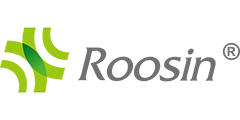
Background: Oxygen is an essential element for collagen synthesis and reepithelialization. The use of topical oxygen after CO2 laser resurfacing has not been studied.
Objective: To compare the rate and quality of healing in wounds treated with an oxygen mist to those treated with occlusive dressing following CO2 laser resurfacing.
Methods: Three patients underwent CO2 laser resurfacing to each half of the face 3 weeks apart. Postoperatively, half of the face was treated with an oxygen mist protocol for 5 days, while the other half was treated with occlusive dressing for 4 days.
Results: At postoperative day 5, significantly less crusting was observed on the half of the face treated with the oxygen mist protocol (p < 0.05).
Conclusion: The oxygen mist postoperative protocol may of- fer patients similar overall healing rates and significantly less crusting compared to occlusive dressing.
LASER RESURFACING is a popular treatment for rhytides, actinic skin damage, and acne scarring. Technologic advances in laser surgery have made this procedure relatively simple, safe, and reproducible. However, despite the well-documented benefits of laser resurfacing, patients must undergo a prolonged and painful healing process. Complications may occur, the most common of which are persistent erythema, hyper- or hypopigm-entation, acne, and scarring. Because of this, both the laser surgeon and the patient are interested in a postoperative protocol that accelerates wound healing, optimizes treatment efficacy, and enhances patient comfort.
Recently a post-laser resurfacing wound care protocol has been developed that delivers oxygen and a nutrient mist to the healing skin. It has been suggested that oxygen therapy could enhance collagen formation and accelerate reepithelialization. The purpose of this study is to compare the rate and quality of wound healing in patients treated on half of the face with oxygen therapy and on the other half of the face with occlusive dressing following CO2 laser resurfacing.
Materials and Methods
This retrospective study is a small case series of three patients ranging in age from 49 to 79 years, with Fitzpatrick skin types I–III. Informed consent was obtained from all patients prior to entry into the study. For each patient, half of the face was resurfaced; 3 weeks later, the contralateral half of the face was resurfaced. The resurfacing procedures were spaced 3 weeks apart to eliminate any exposure of the occluded side to topical oxygen. A Sharplan 18 W continuous CO2 laser with a computer pattern generator (396-usec dwell time) was used. Two to four passes were completed, depending on the depth of the individual patient’s rhytides, and the same number of passes were performed on both sides of the face. For each resurfacing procedure, prophylactic valacyclovir 500 mg orally twice a day was initiated 1 day prior to laser resurfacing and continued for a total of 10 days.
For postoperative wound care, the half of the face initially resurfaced was treated with the oxygen mist protocol for 5 days, while the contralateral half of the face which was resurfaced 3 weeks later was treated with a polyurethane foam dressing protocol for 4 days. The oxygen mist wound care protocol consisted of washing the resurfaced skin with a cleanser (see Table 1 for contents) six to eight times per day and administering the oxygen mist product once a day (following one of the cleansings). The oxygen mist consisted of a combination of sterile water, oxygen (93% ± 3%, de- livered at a rate of 15 L/min), and nutrients (see Table 1 for contents). Therapy was initiated on postoperative day 1, and each treatment took approximately 15 minutes. In addition, patients were instructed to apply an ointment (see Table 1 for contents) six to eight times per day following each cleansing. The polyurethane foam dressing postoperative wound care protocol consisted of applying the occlusive dressing after the laser resurfacing procedure and leaving it in place until postoperative day 4, when it was gently re- moved in the shower. Following removal of the dressing, patients were instructed to splash with tap water and apply petroleum jelly as many times a day as necessary to keep the skin moist. This was continued until complete reepithelialization had occurred. Cephalexin 500 mg orally twice a day for 5 days and prednisone 20 mg orally four times a day for 5 days were given after each resurfacing procedure.

Following laser resurfacing of each half of the face, photographs were taken at 5 days, 1 week, 1–2 months, and 7–8 months. The photographs were evaluated by 18 different health care professionals for erythema, crusting, scarring, and acne. Erythema was graded on a scale of 0 (none), 1 (mild), 2 (moderate), or 3 (severe). The presence of crusting was graded on a scale of 0 (none), 1 (<10%), 2 (10-40%), or 3 (>40%). Scarring was graded on a scale of 0 (none), 1 (<10%), 2 (10-40%), or 3 (>40%). Finally, acne was graded on a scale of 0 (none), 1 (<4 pimples), 2 (4–10 pimples), or 3 (>10 pimples).photographic examples of the different grades of erythema and crusting were provided to the evaluators throughout their assessments. The evaluators were blinded to the postoperative protocol and the photograph order for each time period.
The mean observed agreement among the 18 evaluators was determined. This parameter translates into the percent-age of time that the evaluators gave an identical score for erythema, crusting, scarring, or acne to the same patient, side of face, and time period.
In order to compare the rates of wound healing and the overall final cosmetic results between the oxygen mist and polyurethane foam dressing protocols, the mean scores between the two treatments for the four parameters at the different time periods were compared. A paired t-test analysis was performed to asses the statistical significance of these findings.
Results
At postoperative day 5, significantly less crusting was noted with the oxygen mist protocol (p<0.05). For all of the parameters at day 5, and for all parameters at postoperative week 1, months 1–2, and months 7–8, there were no statistically significant differences be- tween the two protocols (p< 0.05) (Figures 1–3).
The mean level of agreement among the evaluators for acne, crusting, erythema, and scarring was 84%, 78%, 66%, and 84%, respectively. The mean score comparisons between the two treatments on day 5 for the four parameters and the results of the t test are summarized in Table 2.
Discussion
There are generally two approaches to wound care following laser resurfacing. The first utilizes “closed” dressings, like polyurethane foam dressing, to accelerate wound healing and minimize postoperative discomfort. In a study evaluating the effect of occlusion on cellular proliferation during epidermal healing, a mean increased proliferative response was seen in occluded partial thickness wounds as compared to unoccluded control partial thickness wounds. Polyurethane foam dressing, which was used in this study, is a biosynthetic, semiocclusive dressing. It is composed of polyurethane foam and laminated with a pressure-sensitive adhesive. Because the porous wound contact surface removes exudate away from the wound, fluid accumulation and maceration are minimized. The ex- ternal surface of the dressing functions as a barrier to exogenous microorganisms, yet allows moisture and atmospheric gasses, including oxygen, to permeate. There is consensus in the literature that with polyurethane foam dressing, reepitheliali-zation is complete within 7-10 days. However, because the dressing is opaque and the wound is occluded, evaluation is difficult and the risk of infection may be increased
The second approach to post-laser resurfacing wound care utilizes “open” dressings, which simply re- quire the continual application of an ointment (typically petroleum based) to the wound. Although this approach is inexpensive and enables patients to be more involved with their wound care, crusting, desiccation, and/or scarring may occur if the ointment is applied too infrequently or in insufficient quantities. While open wounds generally are viewed as having a lower risk of infection, disadvantages include increased postoperative discomfort and slower wound reepithelialization .
Oxygen plays a key role in wound healing. It is essential for collagen synthesis and reepithelialization,17 and is thought to be the rate limiting step in wound healing. 18,19 Sufficient quantities of oxygen are necessary for fibroblast proliferation and therefore collagen production. Collagen forms a matrix essential for wound healing and cannot be synthesized unless proline and lysine are hydroxylated with oxygen. The tensile strength of collagen in wound healing and granualation improves with increasing concentrations of pO2. Thus the role of oxygen in the wound healing process is both complex and essential.
The use of hyperbaric oxygen in wound healing has been studied. Hyperbaric oxygen delviers oxygen under pressure which increases the solubility of oxy- gen in blood and extravascular fluids. At low concentrations, hyperbaric oxygen can induce neovascularization; however, at high concentrations, vasoconstriction and tissue destruction may occur. Thus a fine line exists between the therapeutic and harmful effects of hyperbaric oxygen. The use of systemic hyperbaric oxygen is limited by the risks of central nervous system and pulmonary toxicity. Topical hyperbaric oxygen offers the advantages of low cost and a lack of systemic toxicity, and has been examined for its role in facilitating healing in open wounds. In one study that evaluated the efficacy of topical hyperbaric oxygen in treating chronic arterial leg ulcers, 67% of ulcers were healed after 6–21 days of therapy. Topical hyper baric oxygen is hypothesized to increase the oxygen content of the intercellular fluid that bathes the is- chemic cells, which is a prerequisite for endothelial proliferation and neovascularization. Because topical hyperbaric oxygen therapy allows for visual inspection of the wound, signs of neovascularization (or devascularization) may be monitored and the appropriate oxygen concentrations can be determined
In this retrospective study, the only statistically significant difference between the two postoperative protocols was that the half of the face treated with the oxygen mist had less crusting on day 5 than the half of the face treated with polyurethane foam dressing. There were no statistically significant differences between the two postoperative protocols at week 1, months 1–2, and months 7–8. Thus the results of this study suggest that the two postoperative protocols provide similar rates of wound healing, with the oxygen mist protocol possibly offering less crusting during early recovery. While the oxygen mist protocol did not improve upon the healing rate offered by an occlusive dressing, it is worth noting that all three patients preferred the oxygen mist protocol to the polyurethane foam dressing protocol because of better pain alleviation and lack of a confined feeling. In addition, because the oxygen mist protocol functioned as an open dressing, wound monitoring was facilitated.
The purpose of this study was to provide prelimi- nary data regarding the use of oxygen mist therapy following CO2 laser resurfacing. Because this study included only three patients, the results are by no means conclusive. Additional larger, multicenter studies are needed to validate these initial findings. One variable that should be considered in future studies is the role of personal attention in wound healing. One patient commented that she felt more comfortable being evaluated for the first 5 postoperative days, which occurred with the oxygen mist protocol but not with the polyurethane foam dressing protocol. The role of personal attention in facilitating wound healing is un- known, though conceivably could be significant. Thus in future studies it may be prudent to provide the same number of daily visits to both study groups.
In conclusion, the results of this preliminary study suggest that the oxygen mist postoperative protocol may offer patients similar healing rates and significantly less crusting relative to patients treated postoperatively with polyurethane foam dressing occlusive dressing. In addition, wound monitoring and postoperative pain alleviation may be facilitated. Thus the oxygen mist therapy may be a viable alternative to occlusive dressings following laser resurfacing. Additional, larger studies are needed to evaluate the efficacy of this relatively new post-laser resurfacing regimen.



Figure 3. Postoperative month 1: A) patient 3, oxygen mist proto- col; B) patient 3, polyurethane foam dressing protocol.






